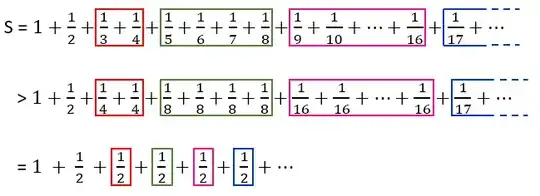Let $r=\frac{m}{n}$ be any positive rational number. Beginning with the equation
$$
r=\underbrace{\frac{1}{n}+\frac{1}{n}+\dots+\frac{1}{n}}_{m\text{ times}}
$$
and repeatedly applying the algebraic identity
$$
\frac{1}{p}=\frac{1}{p+1}+\frac{1}{p(p+1)}
$$
we can eventually find an Egyptian fraction representation
$$r=\frac{1}{n_1}+\frac{1}{n_2}+\dots+\frac{1}{n_k}$$
of $r$ with $n_1<n_2<\dots<n_k$. So $r<H_{n_k}$.
Since $r$ was arbitrary, it follows that the sequence of harmonic numbers is unbounded. Thus the harmonic series diverges.
(I think the greedy algorithm for constructing Egyptian fractions doesn't work here, as you already need to know that the harmonic series diverges in order to prove that the greedy algorithm works for arbitrarily large rationals...)



